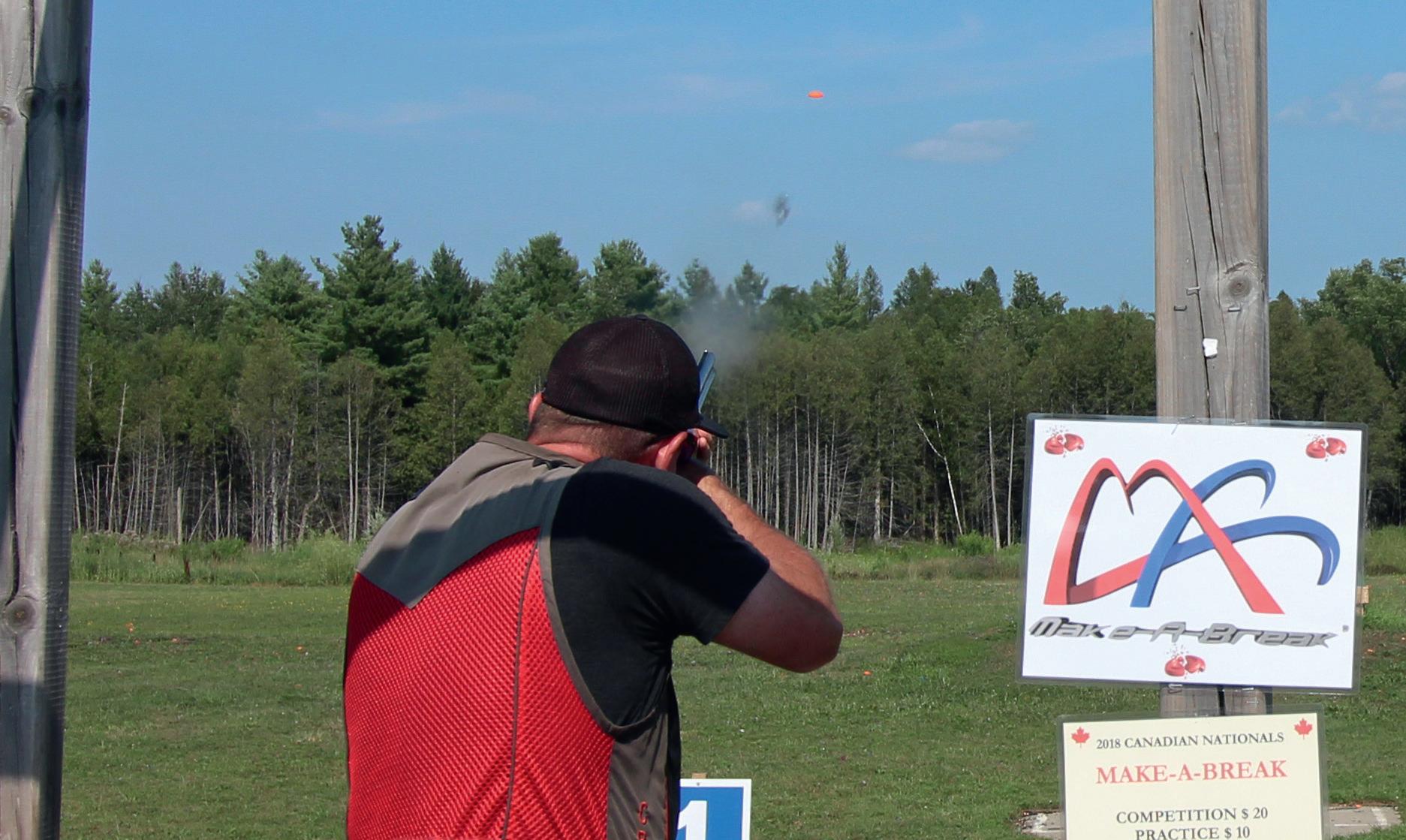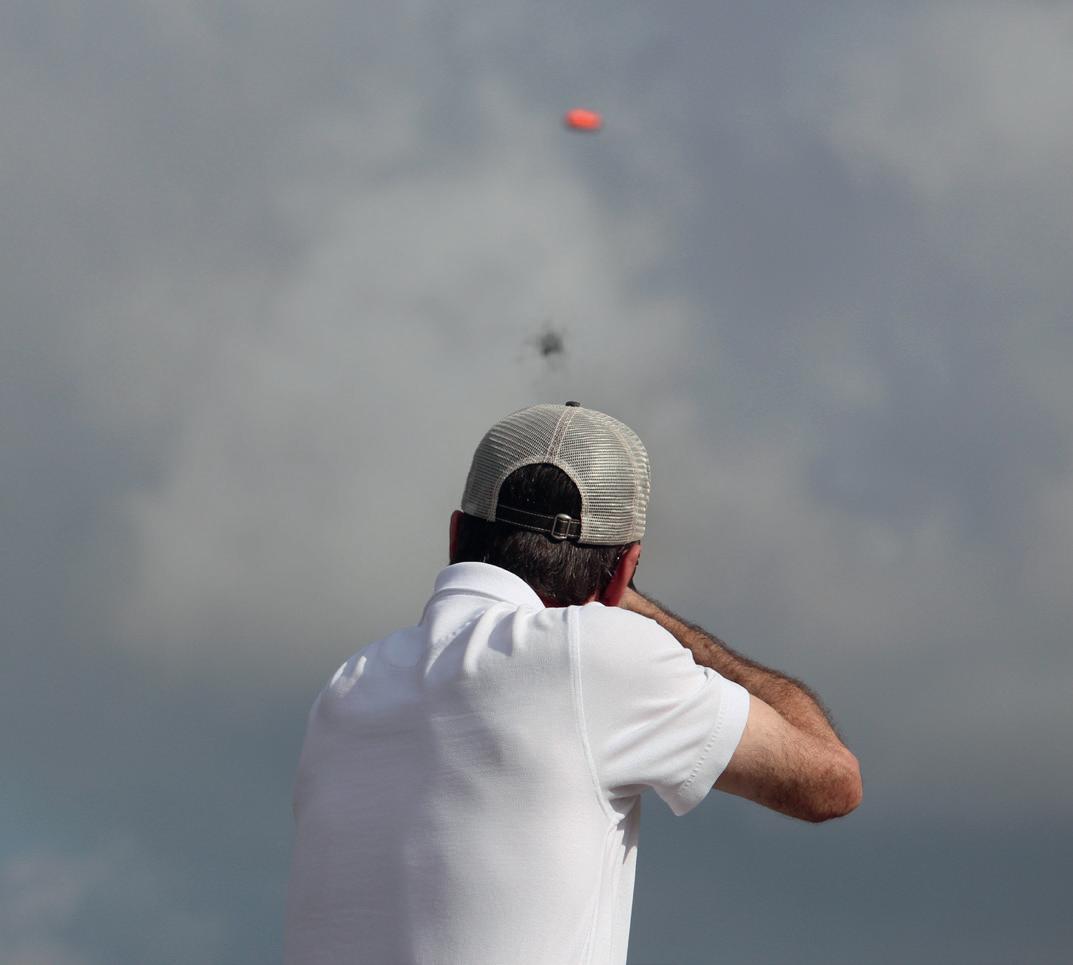
8 minute read
TECHNOID’S COLUMN
OFTEN IN ERROR, NEVER IN DOUBT BY BRUCE BUCK
As shotgun shooters we are most accustomed to think of our shot patterns as two dimensional. We count the holes on a piece of paper inside a 30” circle at 40 yards and compare it to the total number of pellets in the load to come up with the choke effectiveness. We expect a Full choke to produce about a 70% pattern in a 30” circle at 40 yards, a Modified 60%, IC 50%, etc.
Advertisement
SHOT STRING
And yes, we also know that the center of the pattern is denser than the outskirts. I am told that this is due to the demands of the Gaussian distribution but, to be honest, I slept through most of math class. Anyway, the result is that the pattern gets weaker as you move farther from the center.
The problem with all this patterning stuff is that it is two dimensional and we live in a world with three physical dimensions: height, width and depth. Where is the depth dimension in these patterns? Does it matter?
Enter the shot string. When the shot comes out of your barrel it doesn’t fly down the range in a flat sheet like it ends up on your pattern paper. It comes out in a swarm with some shot in front and some trailing. The farther from the muzzle you go, the longer the shot string gets. At 40 yards, a shot string from a target shell can be six feet or a good bit longer.
What causes the shot string? Pellet deformation mostly. Assuming that you start out with all the lead pellets in the shell being the same size and nice and round, that isn’t the way they leave the muzzle. The pellets have a rough journey down that barrel.
First there is set-back. When the primer gets whacked and the powder goes off, the shot wad and the shot get a sudden violent push of around 10,000 pounds per square inch. Physics being what it is, the shot at the back of the wad gets pushed first into the still stationary shot at the front of the wad. This puts a lot of pressure on the lead pellets— and the lead, being fairly soft, tends to deform. Some of the pellets get flattened a bit.
There is more distortion when the shot enters the forcing cone from the cartridge and gets squeezed down to the bore. More abrupt forcing cones can increase distortion more than elongated cones if you listen to those who make a business out of lengthening cones.
Not only do the pellets have to go through initial set-back and the


forcing cone, they have to endure barrel scrub as they go down the tube and rub against the barrel walls. Modern plastic wads do not fully protect against this as shot often gets a bit ahead of the wad as it goes down the barrel.
Then the shot hits the choke for its fourth deformation. The squeezing of the choke flattens some more shot. In all it is a miracle that any shot comes out of the barrel round, but most of it does—especially if it is hard shot. You will notice a difference between 2% antimony “soft” shot and 6% antimony hard or “magnum” shot. Antimony is that expensive hard semi-metal added to lead shot to make it more dent resistant. The difference between patterns of hard shot and soft shot in target sizes can approach almost one choke designation, i.e. Modified down to IC.
The bottom line is that what leaves your barrel when you shoot a new shell isn’t all nice round shot. Some is round, some has sides that are flattened a bit. The amount of flattening can vary with the hardness of the shot, the wad used, the barrel in which it is shot and the velocity. If you have ever seen reclaimed shot you will note this. That pellet distortion didn’t happen when the pellet hit the ground, it happened in the barrel.
Here’s where shot string comes in. Due to wind resistance, round pellets are more aerodynamic and fly faster than flattened pellets. Round pellets lead the shot string, damaged ones bring up the rear. You can’t see this on a stationary sheet of paper, but you sure can if your paper is moving.
Back about 100 years ago Maj. Sir Gerald Burrard in England tested shot string by attaching an elongated steel plate to a Model T and having it driven by at its top speed of 40 mph, about the same speed as some of our sporting clays targets today. He felt that the shot string was around 5.5 feet long with an IC choke and a foot longer with Full. He concluded that shot string really didn’t matter much.
At about the same time as Burrard was doing his experiments, John Olin of Winchester-Western was working on hard plated shot and progressive burning powder to lessen the shot string, which he felt was of significant importance. Many others were testing shot string using falling steel plates, spinning discs and other imaginative methods. Answers varied.
Bob Brister in his seminal 1976 book “Shotgunning, the Art and Science” got his wife to drive the family station wagon towing a trailer with a long piece of paper on it. His results were different from Burrard’s and closer to Olin’s. He found that the shot string varied quite a bit, depending on the load used. The longer and heavier the payload, the more the distortion and the longer the string. The softer and smaller the shot, the longer the string. The larger the bore, the shorter the string, as shown by comparing a 3” .410 to a 28 gauge. He used household flour to buffer some shells and got shorter shot strings.
The shot string is going to produce a less dense pattern on a crossing target than you see after shooting at a stationary piece of pattern paper because all the shot doesn’t arrive at the same time and the target is moving through the pattern, basically moving out of the way of some pellets.
Larry Nailon of Clearview Products did the math some years ago, so I don’t have to inflict my lack of numeric precision on you. Larry said that a six foot shot string would have to be going 1500 fps at 40 yards to allow all the pellets in the string to pass through a 30” pattern before a 35 mph target could get across it. A #8 pellet starting at 1200 fps has slowed to 660 fps at 40 yards, so this ain’t gonna happen. He says, ”Full choke gun performance is 75% at 40 yards, so a six foot shot string with 75% of the original shot charge in the 30” pattern, will deliver only 30% of the original shot charge at 40 yards before the target passes across the 30 inch pattern at 35 miles per hour.”
Brister’s testing showed that an IC choke with soft shot target load


of #8s which should produce a pattern of 230 pellets in the 30” circle, produced the greatest loss of center density due to a 12 foot shot string and only hit the center 30” circle with 76 pellets. His trap load of #8s with hard shot had a much shorter shot string and put over twice as many pellets in the 30” circle, but still was 30% less dense than the pattern would have been on paper that was stationary.
You can see that these test results vary, but in all cases the shot string makes the 30” center of the pattern less dense for a crossing target when using standard lead target loads. This is born out by today’s high speed photography, a more convenient method than shooting at cars towing paper.
And don’t for a second think that you can overcome shot string by swinging the gun to spray the shot laterally. The shot can only be spread laterally when the shot is half in and half out of the barrel. This happens in milliseconds, so quickly that the speed of the swing is immaterial. If you want to test this, just shoot into a pond of water. Do it once not moving the gun and again swinging the gun like crazy. You won’t see the slightest difference in the width of the splash.
And that’s the deal on shot string. It basically thins your pattern on crossing shots because so many pellets arrive late and outside the moving 30” circle. Open chokes and soft lead produce the longest strings and greatest pattern loss. The farther away the target is, the longer the shot string and the more the pattern is thinned out. Shot string is shorter on closer targets so it matters less there. There is no real shot string effect on straight away shots. In between angles are in between. A short shot string will give you a higher chance of breaking a target due to the denser pattern if you can center it. However, a long shot string gives some vague hope to the rest of us. If you miss in front of the target, a long shot string just might possibly produce a one or two pellet hit from those trailing pellets. If you miss behind, nothing ever helps. But you knew that. n
That’s all for now. If you have a question, email me at TheTechnoid@gmail.com For more endless Technoidal shotgun drivel, check out www.ShotgunReport.com Until then, boots off, beer open.















